This is part of the #STL2039 Action Plan storytelling series in partnership with Humans of St. Louis.
Tishaura Jones: Ellen is the coordinator of what I call my baby, which is a college savings account program.
Ellen O’Neill: I’ve been a fangirl of Treasurer Jones since I moved to St. Louis for the Brown School. I’ve been following her work for a long time and it’s a huge honor to run her program that is her baby.
Tishaura: The College Kids Children’s Savings Account Program gives a $50 college savings account to every kindergartener entering a public school in the City of St. Louis. Incentives are attached to each account so they can watch it grow. Currently, the incentives are up to $35 for perfect attendance; matched savings up to $100; and parents can earn up to $50 in their child’s account for financial education courses which can be completed in person, online, or via a phone app. I learned about this program from the Treasurer of San Francisco, Jose Cisneros. They have an identical program called K2C, or Kindergarten to College, and they provide a $50 seed account and incentives for the account to grow. Their highest cohort is now in middle school. I consider Jose a mentor and he has been a pioneer in financial empowerment work in this space, allowing other treasurers, like myself, to learn and grow from the things that they have tackled and are addressing in San Francisco. Then, I found that Washington University’s Center for Social Development at the Brown School had been doing research about children’s savings around the world and had not yet been able to launch a program in St. Louis. Through their research, they discovered that children who have less than $500 saved are three times more likely to go to college and four times more likely to complete college.
Children who have less than $500 saved are three times more likely to go to college and four times more likely to complete college.
By the year 2030, more than two-thirds of the jobs in our economy are going to require some sort of post-secondary education. I looked at the statistics for St. Louis, with over 50 percent of children living in poverty, and I thought that this was important to be able to level the playing field and to be able to change our children’s minds to have a career-minded or college going mindset as early as possible. The program is not only focused on children, it’s focused on families. Through the children, we are also trying to change the behavior of families for asset building, for closing the wealth gap, and for trusting financial institutions to keep their money because there is a generational distrust of financial institutions from minority communities.
So through this small $50 investment in children, we are tackling a whole host of issues that deal with minority marginalized communities and their distrust of financial institutions and asset building. The racial wealth gap is growing. The average White family has about $141,000 of wealth. The average Black family is $11,000. So if we don’t make some changes soon, by the year 2050, White families will continue to amass wealth while Black families and Latino families will not.
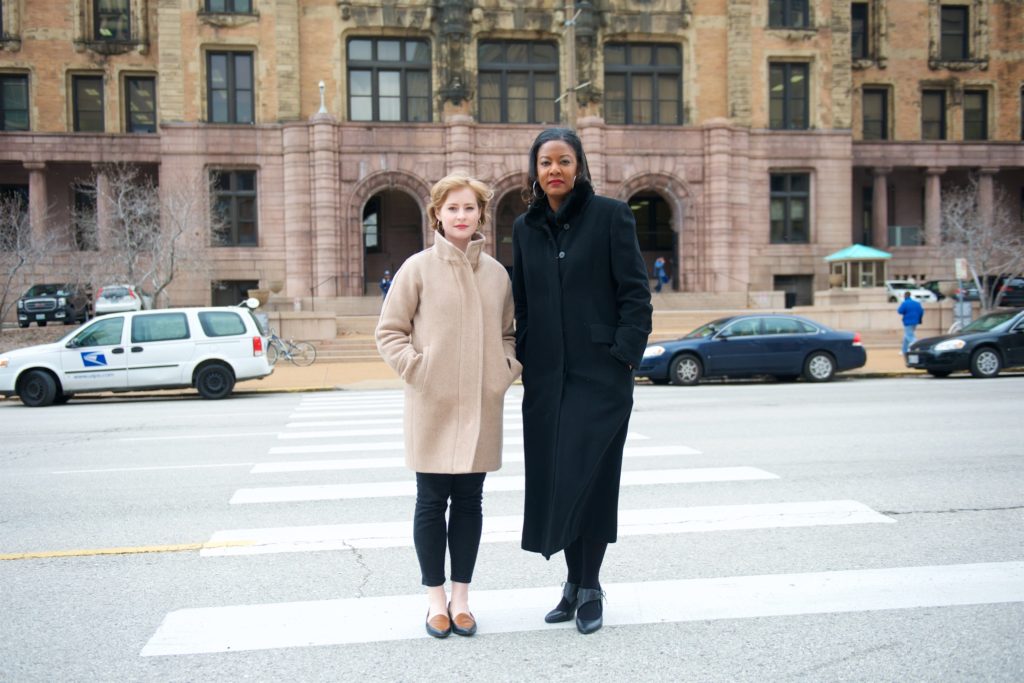
Ellen O’Neill and Tishaura Jones. (Photo story by Lindy Drew/Humans of St. Louis)
Ellen: Didn’t Prosperity Now come out with a statistic that it would take 228 years for minority families to catch up to White families if White families stopped earning right now? Today, if they stopped accumulating wealth or assets, it would still take over 200 years for African American and Hispanic families to catch up.
Tishaura: Right, and we’re only 100 and some-odd years post-slavery. We don’t have another 200 years to catch up. So it’s going to take investments like this from the local government and citizens in order to reverse this trend.
Ellen: And not just investments for regular income like how we’ve structured our welfare systems in the past in a way that’s income-based to help people survive. It has to be about asset development. It has to include helping families accumulate wealth that’s not just the day-to-day monthly expenses that really gives them a cushion for the next generation for their kids to grow and have something to stand on to have a safety net.
Tishaura: Black families weren’t allowed to participate in the New Deal programs that allowed homeownership in White communities. So we don’t have assets to pass down to our children and we can’t build generational wealth. We’re already starting 50 feet behind the starting line when the gun goes off, and the gun’s already gone off. So we have a long way to go in order to bridge that gap.
What have been the greatest struggles and the greatest successes about the program so far?
Tishaura: We’ll start with the struggles because we can talk for hours about the successes. The struggles have been political more than anything. There are a ton of people who believe that I am in this for myself, and someone who’s in it for themselves wouldn’t sit here and talk about the racial wealth gap and close it or be looking forward 20 to 40 years to see how we can change the mindset of children who are coming up through our education system. I do this for all of the children who are in our city. I do this for my son because I want him to grow up in a different St. Louis than the one I grew up in, one where people are looking at how they can change their lives not only aspirationally, but financially. I do this because I love St. Louis and I see its potential.
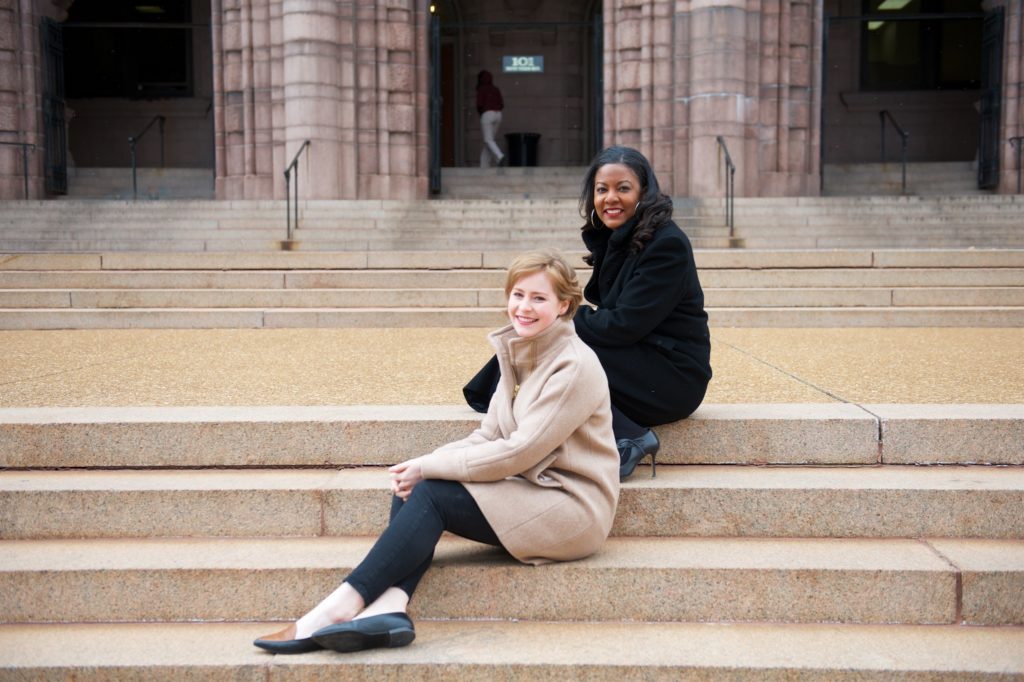
St. Louis seems to be stuck right now, and we need some real game-changing programs that are going to get us out of this rut. The College Kids Children’s Savings Account is one of those programs. And we see successes every day as we encounter children and families. You tell a kindergartener that they have $50 and they think they have $5,000. They light up! I see it when I’m at the grocery store or at a restaurant and a family stops me:“Thank you for opening these accounts because I wouldn’t have thought to open one myself. You just took one of the things off of my to-do list.” So we have parents who are actively participating in programs. We’ve outgrown our space for our Family Savings Nights at the local credit union. I mean, we literally broke a fire hazard at our last event! Now we’re trying to figure out how we can have more Family Savings Nights, how more credit unions can participate, and how we can spread it out. Our credit union partner in this program is First Financial Federal Credit Union. They hold all of the accounts for the children, and we have over 10,000 accounts right now. The exact number is…
Ellen: 10,044. And that adds up to over half a million dollars saved in the program, which is impressive when you consider where our families live and their income level.
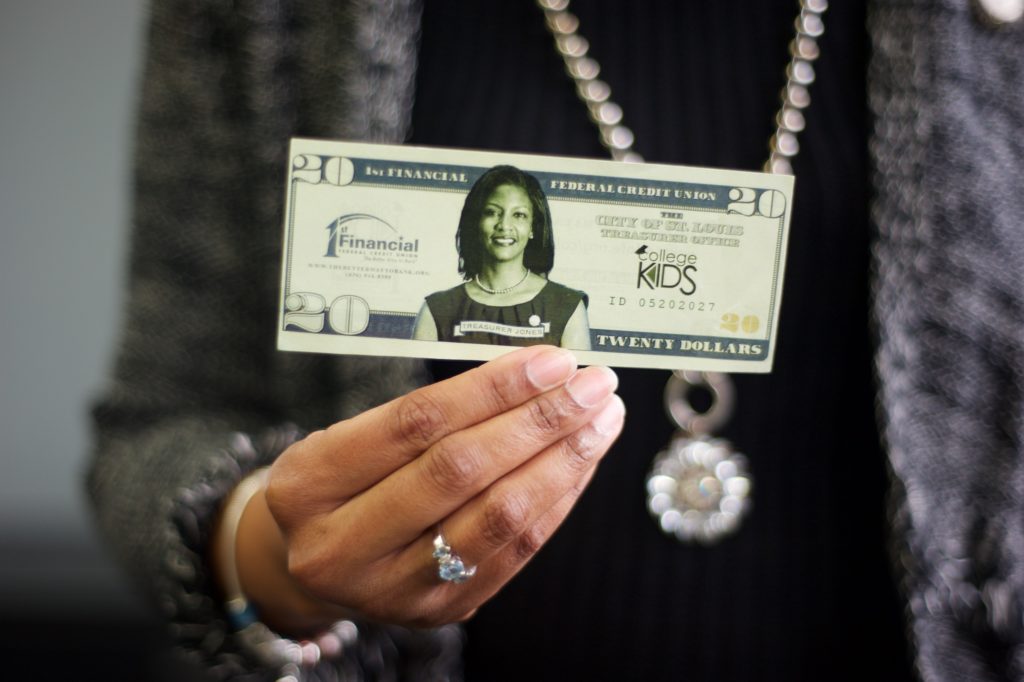
Tishaura: Exactly. Over $40,000 of that is individual family money that’s in the program. And we also have about a 22 percent participation rate, which, when you compare that to the national participation rate of a 529 College Savings Plan, which is three percent, we’re growing by leaps and bounds. For Family Savings Night, our credit union provides what’s called a $20 Tishaura buck to every family that comes. It’s a $20 bill with my picture on it. It’s the cutest thing! They provide a $20 scholarship for every family that comes in and then we match it so it qualifies for matching savings. So a family that has never participated comes in with just $50 in their account and they leave with $90 or more because what we often find is that families will add some money to it, too. It’s 20 bucks, and we spend 20 bucks on lunch all day.
Ellen: Or we have some kids that bring in Tonka Trucks of change that they’ve been saving up. We have kids with piggy banks that bring in their quarters because now they have an account they can deposit it into. They’ve been saving and it’s amazing. One of the things we found through Family Savings Night is that families do want to save. This is something they want to do.
Tishaura: So we’re trying to make it easy for them to save.
Ellen: And we make it so that their accounts grow faster through our matching program, for example. Treasurer Jones said that it’s up to $100 that we match, and that’s per school year. So if you deposit $100 every single school year, that’s $200 per year that grows in your account.
Tishaura: The program started in 2015.
Ellen: We have three cohorts.
When did you first open up a college savings account or did you have one?
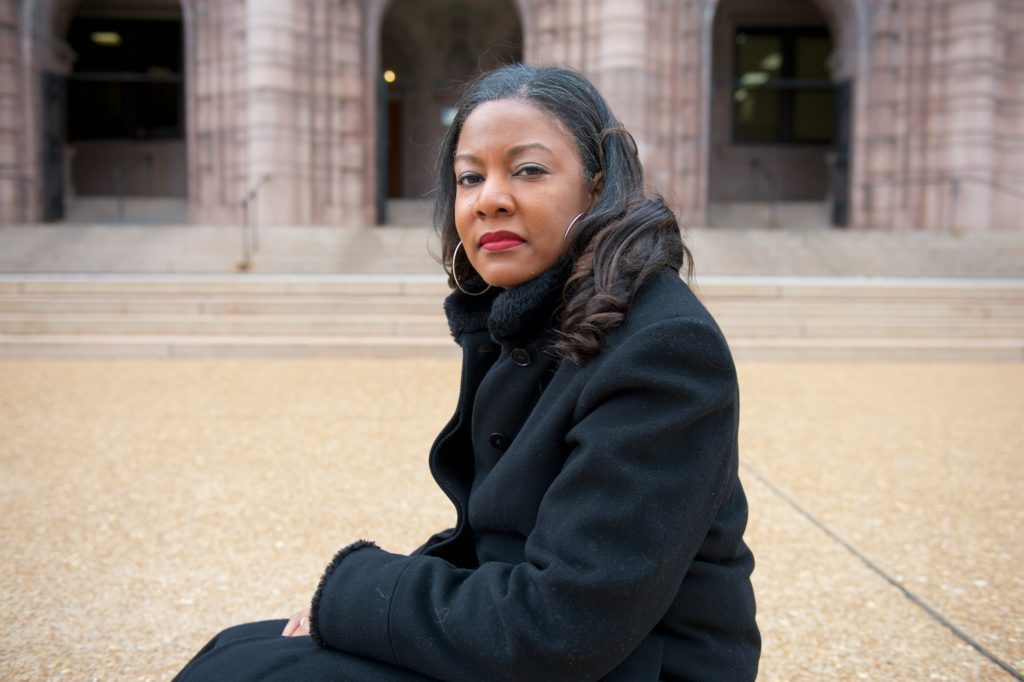
Tishaura: I didn’t have one, but my parents talked to me about the importance of going to college. I don’t even know if the 529 program was around when I got out of high school. That was in the 90s. But my parents talked to me about the importance of banking and I remember that my mother would physically take me to the bank with her every two weeks when she got her paycheck. She taught me how to write checks and my dad taught me about investments. So I had these lessons growing up. My son has an account, obviously, because I have to practice what I preach. So it’s literally a simple conversation with him saying, “Hey, mommy opened this savings account for youth for college,” and he thinks that he could just take the money out of them, you know, whenever he wants something. So I tell him, “No, you can’t touch that money. You have to find another way to earn money in order to get the things that you want,” which is usually a game or something on the PlayStation. So, no, I didn’t have an account, but I was fortunate enough that my father could afford to pay for me to go to college and I graduated with no student debt. Now, graduate school was another story. That was on my own. But coming out of college with no debt, I realize that I’m the exception and not the rule.
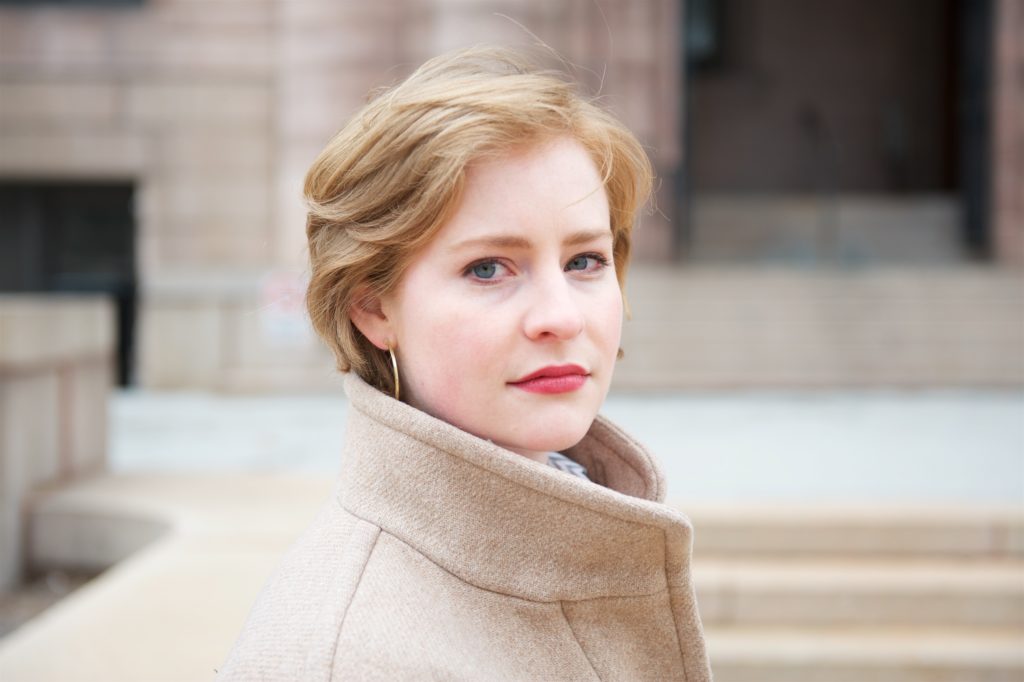
Ellen: My college experience and how I paid for college is a little different. It’s something that I don’t love to talk about. When I was born, an investment account was set up in my name and it became mine when I turned 18. I decided to use it for college and graduate school. So we talk about the racial wealth gap, and I’m from a White family. I have absolutely benefited from that, and it’s something that I’ve personally worked through and it also informs the work that I do here because I’ve seen what it’s like when you do have those assets and how that can really change your life. I’ve been privileged in that I haven’t had to worry about how I’m going to get an education or how I’m going to pay for an education, and that’s something that I’d like to make a reality for our students here in St. Louis who may not have been born into the same circumstances that I’ve been born into.
I try to look at public service as entrepreneurial. What can we do differently with government to serve the people and not the other way around?
Tishaura: When I ran for treasurer in 2012, I wanted to think outside of the box. I know we use that phrase a lot, but I did. So I literally Googled “city treasurers” and Jose Cisneros came up along with a Stephanie Neeley, who was then the treasurer of Chicago, and I made it my life’s mission to meet both of them, just to see how they ran their offices. I had a chance to talk to Stephanie first because no one’s flying to San Francisco, but I could get to Chicago. At the time, I was working at an investment bank part-time because I was a state representative, and most of the reps have a part-time job that they use to supplement their income. And my vice president that I reported to was in our Chicago office.
So I was talking to him and said, “You know, I’m running for treasurer and I found this lady named Stephanie Neeley, who’s the treasurer of Chicago.” He was like, “Oh, I know Stephanie. And I know her predecessor, and I know her predecessor.” I flew to Chicago and he scheduled the entire day for me to meet not only Stephanie but both of her predecessors. And, did I mention, they were all Black women? I was in heaven. So, they talked to me about why they started the work they did, how they started, the successes and failures that they ran into, and it was amazing.

Those meetings and conversations informed how I built my platform for treasurer, turning this office from one that was so predatory and only writing parking tickets and towing people’s cars to one that used that power for good. Then, when I was running for treasurer, I talked about how we have an office in which one of the primary jobs is to have a relationship with the banks. So how about we take that relationship a step further and make the banks accountable for the Community Reinvestment Act money that they spend in our communities. Not one candidate had that platform, and by the end of that campaign they were all imitating me. I try to look at public service as entrepreneurial. What can we do differently with government to serve the people and not the other way around? That’s why I do this work.
Did it take a Black woman to come into office to start these accounts and do the work like you’re doing here?
Tishaura: I’d say women generally lead from different places because we’re doing a lot more than just being an elected official. No offense to the men that do this work, but usually with a woman who leads, we are not only coming to work, but we’ve got children or parents or something going on at home that we have to take care of. So, at least for me, it’s how can I do this work to make people’s lives better and to take one thing off their long to-do lists? And then being a single mom, definitely identifying with other women who are like me to make sure that we create futures for our children because, eventually, they’re going to have to take care of us. So how can we close that gap? We all want our children to be more successful than us. So this program kind of sets it in motion. It doesn’t guarantee it, but it gives the kids a good first step.
How can I do this work to make people’s lives better and to take one thing off their long to-do lists?
When I’ve asked, “What’s the factor that got you to inject Racial Equity into your institution’s DNA,” a lot of people say, “It’s our boss. It’s the person who’s in charge.” You’re the boss. If you were a White man, if you were a White woman, would it be different?

Tishaura: Well, a Black man has had this office for the last 31 years and never even looked at this as an opportunity. That’s no disrespect to my predecessor, but he didn’t. The other thing about injecting Racial Equity into this work, when I looked at the statistics of asset-building and sheer participation in financial institutions for African Americans and other marginalized communities, our statistics were horrible. If you haven’t noticed by now, I use data and outcomes to drive a lot of the decisions that we make in this office, which is also unheard of because, before, it was whatever… whichever way the wind blows. I don’t know how they made decisions. But I know I’m going to do my homework. I’m going to make sure that whichever way that we decided to go is rooted in research. And, we also do research in this office. Even about simple things as to how we say and how we present something. We want all the data.
I use data and outcomes to drive a lot of the decisions that we make in this office, which is also unheard of because, before, it was whatever… whichever way the wind blows.
Ellen: We’re actively running experiments now to test how successful our services are. We measure everything to know that we’re implementing best practices and that everything is evidence based because this is about people’s lives.
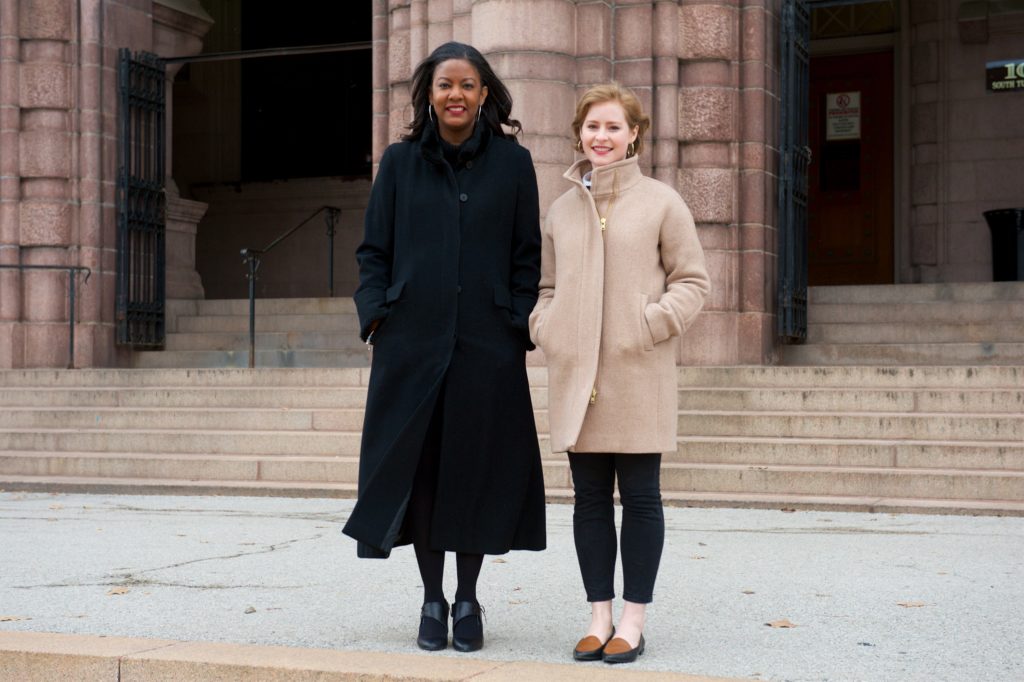
Tishaura: Ellen’s not the first social worker we’ve hired. I want all the data and all the social workers, too.
Ellen: So, this is an automatic enrollment program. You don’t have to sign up for anything, which can make it difficult for families to know about. There’s a little bit of an extra lift, but we do have a consent form that families have to sign in order for us to give them their attendance incentive. Treasure Jones mentioned that it’s a dollar deposited into the account for every week that a child has perfect attendance. So they have to sign a form to allow us to access that data from the school. And recently we reworked the form so it was easier for parents to understand what was going on and easier for them to return the form. We do know that there is some functional illiteracy in our parent population. Just the nature of poverty and St. Louis. So we make it all about the families. On the form, we even moved all of the disclaimer language to the back. So it’s still there in a big block of text, but it’s on the back, and the form itself is colorful, it’s big…
Tishaura: And it’s bold where the things are that we need them to know.
Ellen: Yeah, and we changed it so that parents can take a picture of it and email it back to us once they’ve signed it. So they don’t have to mail it. Maybe they don’t have time to go hunt down a stamp. So it’s little things like that that we make sure work for our families. It’s not about this office. It’s about helping these families build assets and helping our kids achieve what they want to achieve.
Speaking more about Racial Equity capacity building, what other ways did you make it a priority in order to make these subtle changes that are allowing kids to benefit in the end?
Tishaura: We are uber conscious of the images that we provide on our website and on our marketing materials. We want to make sure that families see people that look like them and that’s I’m not in too many of the marketing materials. I’m like, “No, don’t put my picture anywhere,” because I want people to see kids with money and images that look like, “Oh, that could be my kid.” And we want kids to see people that look like them, too.
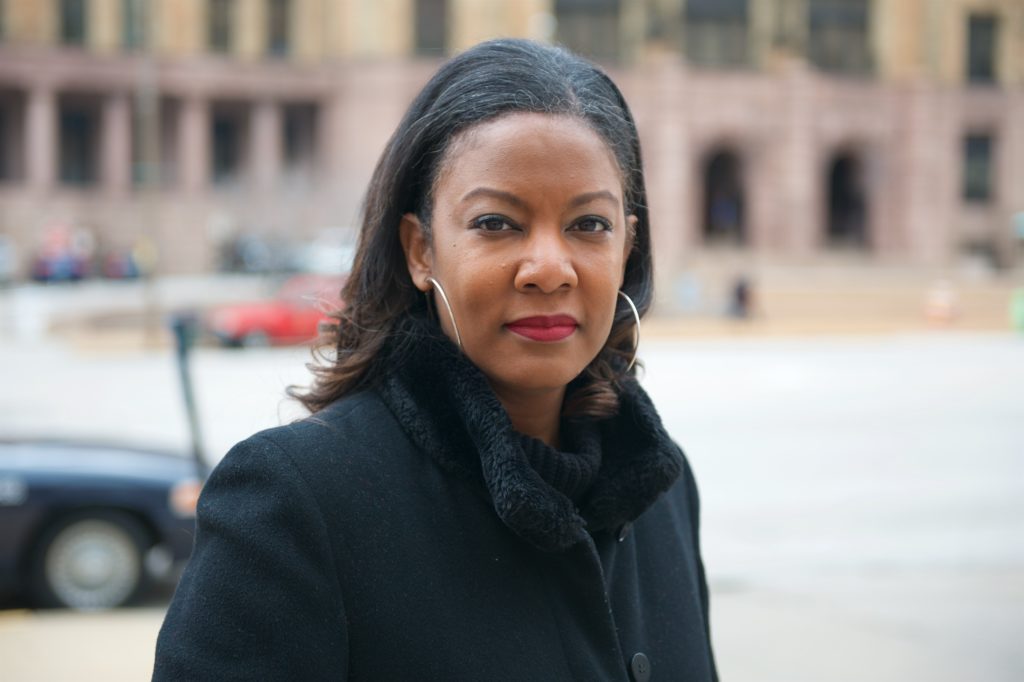
We were injecting Racial Equity in this work before Mike Brown happened. We were already working on this program and our other financial empowerment programs before August 9th, 2014. Like I said, data informs our decision making. And when the data tells us that Black and Brown communities are affected by changes in financial systems, in the laws that regulate financial systems more than anybody else, and then we don’t trust financial systems more than anybody else, we set out to say, “How can we intentionally target communities that don’t believe in banks and credit unions?”
So a lot of times we’re in Black churches. My pastor at Friendly Temple, Mike Jones, allowed us to do a lot of outreach experiments with our congregation by bringing classes to the church. We speak to a lot of African American pastors and try to get in Black churches as well as partner with our financial institutions to bring classes to community centers and recreation centers with senior citizens who are targets for identity theft and fraud. We realized that although we have a classroom here in City Hall, we’re out in the community a lot. People will come in here and say, “There’s nobody here.” Yeah, that’s because we’re out.
We also keep track of the data in all of our schools to see who’s participating, and who isn’t, and by what percentage. So when we see a low percentage, we’ll target that school to see how we can get in, who can we find that knows the parents well that’s a good partner that that community trusts. We build a relationship with that person in order to get this information out to families. So we realize it’s about community.
How do you choose the institutions that are going to be participating in the program?
Tishaura: With the children’s savings program, obviously, we were intentional. We chose the school district and the Charter Public School Association, and Wells Fargo was our financial education partner. We went to several banks to see if they would be willing to hold these accounts for free. The banks said no, but First Financial Federal Credit Union said yes. And that’s not the only way that they partner with us. They do the financial Family Savings Nights and they have opened accounts for other families. Families will come to a savings night and realize, “I don’t have a checking account” or “I don’t like the bank that I have a checking account with because they charged me too many fees. I’m going to switch all of my accounts over here.” Or, “I’ll open an account for my other child who also deserves to be saving.”

Ellen: That’s the great thing about this program. Yes, we’re helping kids save for college. We’re helping kids build a saver mentality that we hope they’ll carry for the rest of their lives. But we’re also helping families become banked and helping them think through their financial situation. We just launched a tax time experiment where we’re helping families file their taxes for free and giving them resources about that because we know tax time is one of the best times to improve a family’s financial standing.
Tishaura: So then we’ll send them the form to transfer a portion of their refund to their children’s savings account.
Ellen: That’s what’s great about working for Treasurer Jones is that she gets the big picture. She sees how it’s all related, and she gets what it takes to do this work and is committed to new ideas.
Tishaura: Most times I say yes before they tell me no. “Can we…?” “Yeah, sure!”
How can other folks think courageously about stepping into any type of work to further Racial Equity?
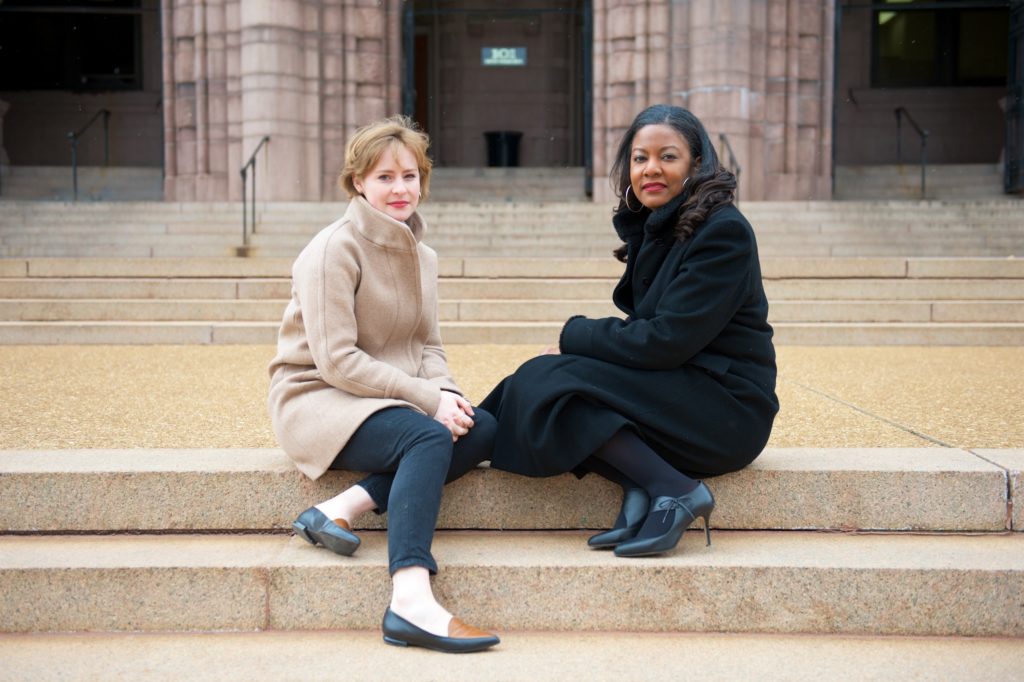
Tishaura: They’re going to have to become comfortable being uncomfortable. I have become comfortable with the uncomfortableness of the constant political attacks I received as a result of starting these programs. And I’ve become so comfortable that I can now spit the data and all of the outcomes that we have that combat this sort of cognitive dissonance that a lot of people have, even though they hear all of the great things, because it’s me doing the work. For example, the St. Louis Post-Dispatch editorial board – “Well, they’re good programs, but she just shouldn’t do them.” I embarrassed the Post-Dispatch last year by calling them on their racism and their bias, and it went viral. It wasn’t just embarrassment, it was a national embarrassment. Somebody needed to say it. And because I have become uncomfortable in my uncomfortable position, a lot of people need to do that, too. We especially need White women to become uncomfortable having these conversations and lifting up marginalized communities and pointing out racism and bias and misogyny and sexism whenever they encounter it.
Because I have become uncomfortable in my uncomfortable position, a lot of people need to do that, too.
Ellen: As a White lady, I’m never going to understand what it’s like to move through the world as an African American or an African American woman. So when I come to this work, it’s about coming from a place of humility and a place where it’s okay to be uncomfortable and not be fragile about that. White women, especially, can tend to be very fragile when it comes to racial issues because it’s uncomfortable.
Tishaura: When I testified at the legislature, we had an example of how, “These programs are great, but…” So because the treasurer’s office is a state office, it’s a county office, which means all of the laws regulating the office are state law, not municipal. And the Board of Aldermen has a huge problem recognizing that and changes all these ordinances saying I can’t do this or I can’t do that. And I’m like, “Look, the state law doesn’t say that.” And state law trumps local every time. So I’m working with Representative Shamed Dogan to add financial empowerment as an official duty of the office because I want this work to continue no matter who is in office. Again, taking myself out of the equation and saying I want the next treasurer to be able to have the capacity to extend this work further than me.
I want the next treasurer to be able to have the capacity to extend this work further than me.
You would think that that’s a good thing. And in a Republican control committee, the only pushback I got was from two White Democrats. I’m a Democrat. And they used to be on the Board of Aldermen. So we spent 45 minutes to an hour rehashing everything that’s happened two or three years ago not related to the bill at hand. Well, the last comment in the hearing was from a rural legislator that represents Callaway County and Mexico, which is a coal town right next to Jefferson City. And he said, “You know, I may not understand a lot of what’s going on. I’m a rural farm boy from Mississippi. And I want these kinds of programs for my kids and my district. Can you come and help us get the word out?”
Ellen: He said, “This program is great. Let’s do it. Let’s put it in my community.”
Tishaura: I said, “Here’s my card, we’ll go there and we will help you.” Because these programs are replicable. Next month I’m going to St. Paul, Minnesota to help the mayor there who sees the benefit of the program. I’m in conversations with the newly elected mayor of Atlanta, Kesha Lance Bottoms and her staff, to start a program there. And I was just approached when I was in DC by a gentleman in Tallahassee to go and start a program there. So, take me out of the equation. Kids should be saving for college or post-secondary experiences.
Why would there be pushback?
Tishaura: Because it’s me. Because it’s a Black woman who took this office and decided to do something different. Who decided to take parking funds and use them to fund children’s savings, which is unheard of. It’s been rewarded and awarded on the national level. I’ve received national awards for this program, but in St. Louis they just see it’s me.
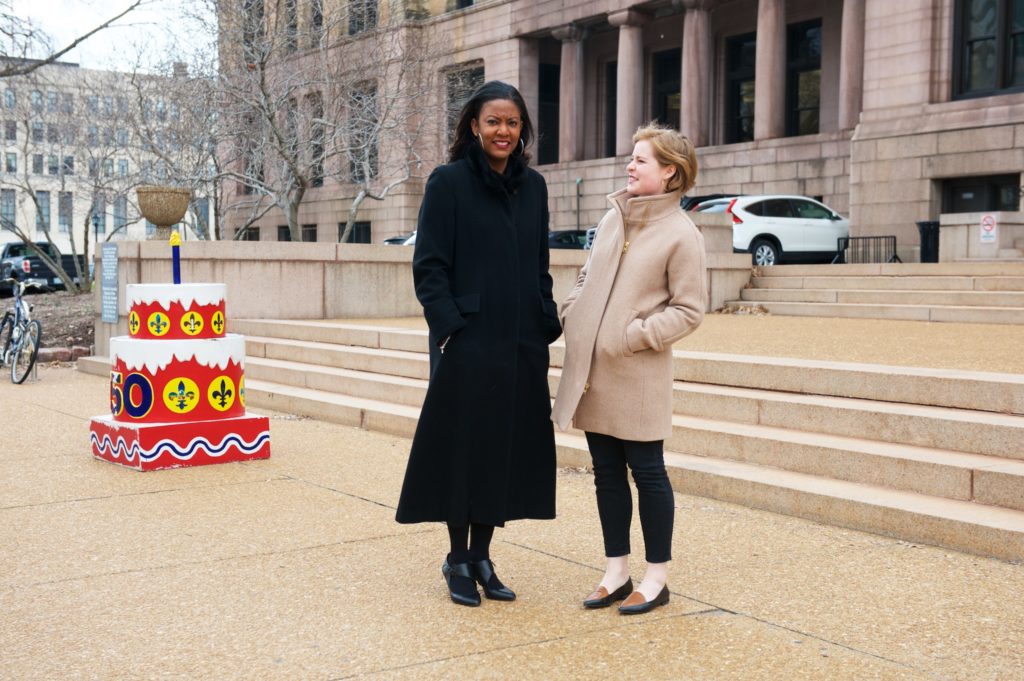
Ellen: Actually, I think that people would pay more parking tickets if there was a broader understanding that they were sending kids to college.
Tishaura: And you don’t necessarily have to get tickets, because anytime you pay for parking – if you pay a meter in the garage – a portion of these funds goes to help our children’s future. Our annual budget is about $15,000,000, and we take $350,000 to run all of our financial empowerment programs. And of that $350,000, only about $225,000 and some change is for financial empowerment. So the bulk of that budget does go towards the children’s savings programs and they even had a problem with that. They tried to say that the overhead was too high and I said, “No, you’re not looking at all of the numbers.”
What do you need to do the work that you want to do more efficiently, faster, and the way you’d like to see it happen?
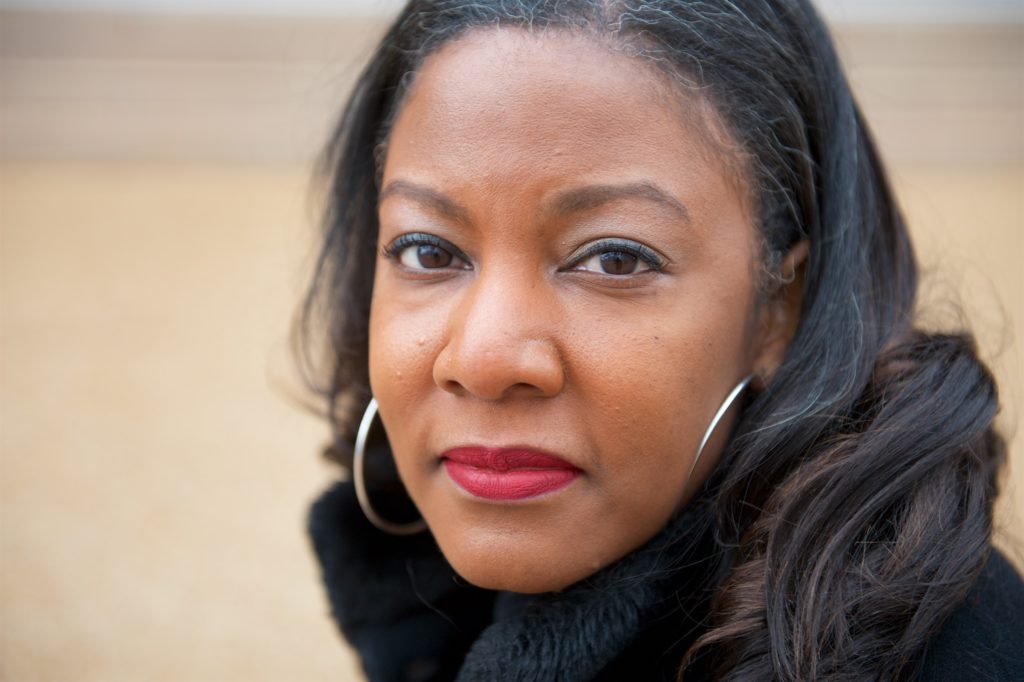
Tishaura: From a program standpoint, I would really love it if the corporate community at large and the philanthropy community at large would make a huge investment in this program for the incentive so children can watch their account grow so that money will be there for them when they graduate. We do a lot of individual and corporate fundraising. But sometimes it’s difficult to get returned calls because again, they see me. Take me out of the picture. This is a good investment for our corporate community to make in the future of children’s lives because if we don’t invest in them now, we’ll be paying for them later. Programmatically, while we have good software to track all of our participants – it’s good, it works – there’s a lot of opportunities for improvement there. So I’d also like to see like some sort of civic hackathons so we can take what we currently have and make it better.
Ellen: So, the software program is not specifically set up for child savings accounts. It’s set up for individual development accounts, which is geared more towards adults. So it works well. I’m able to track all of our students and all of our deposits. But, it’s not as user-friendly as I wish it was. Since our kids are so young, the majority of my work is working with parents and they have trouble accessing the online platform. A lot of them call me and get locked out or can’t remember how to get there. Then, once they get into the platform, it’s not very intuitive to use. It’s also just old. It hasn’t been updated. So it’s been a learning curve for me to figure out how to use it.
Tishaura: You know, we would love to white label it so we can tell parents, “Go and download the College Kids App from the App store.” But all we can do is tell them to download Outcome Tracker.
Ellen: That’s the database. Not just anyone can’t access it. You have to have an account. You need your account number to log in and the zip code that you use to register your child for kindergarten, and it just tells you your information. I’d also love to eventually see a city-wide data sharing agreement or something where we can say, “Hey, we have this cool data that we’d be willing to share with you that’s deanonymized. Can we get your data that you have over at HUD or the Promise Zone?”
Tishaura: Something like a public database that we can all have access to so we can see multiple data points on our families and then construct programs or interventions that help them. Because, right now, what we have is all of these silos all around and nobody shares anything.
Ellen: I’d also love more money to do different incentives for our kids.
Tishaura: Yeah, I would love to expand a model Oakland has to invest in their children at both ends. They have children’s savings accounts for kids that enter kindergarten, but they also provide free community college for every kid that graduates high school. So if a kid is graduating and they know that a four-year college may not be for them right now, but that they could go to St. Louis Community College and at least get those first two years of prerequisites out of the way or the courses that everybody has to take for free, that’s a huge incentive. Or they could take another training program to become a certified truck driver or learn a trade.
Ellen: And that’s why we’re helping them understand that this is also like a workforce development program. We’re helping kids get the training that they need down the road to be adults and to be successful and to support their own families and kids one day.
Tishaura: That’s right. Invest in them now or you’re going to pay for them later. This affects everyone because so goes the city, so goes the region. So if one half of the city has been neglected, which we know, because anybody who lives north of Delmar, they are going to start looking for ways in order to get what they need. I’m not saying it’s right, but where are those resources? South of Delmar. If they’re picking up a paycheck, they are not breaking into cars or homes or the petty things that they can get caught up in. So how do we redirect people so they can live the American Dream that everybody else does? That’s what equity is. Leveling the playing field so everybody has a chance to succeed and thrive. So how can we invest in people now so we’re not paying for them later? People don’t realize that taxes go up because we have more people in jail. That’s $35,000 a year that we pay for somebody to stay in jail versus a little $50 that we’re investing in them now.
Invest in them now or you’re going to pay for them later.
What does a racially equitable St. Louis look like for you in 2039?
Tishaura: It looks like real investment everywhere in the city, not just in the neighborhoods that are already thriving. There’s nothing but vacant land across the street from me. So that means that there are houses built across the street from me. That means that the beautiful brick houses that I see in north St. Louis now have families living in them. They’re not vacant. And the families that grew up there are allowed to stay there when the area starts to improve and they’re not pushed out. That looks like any neighborhood school is a good school to send your kid to because the VICC Program will be over by that time. That means that we have the pride that we once had in St. Louis Public Schools where kids say, “I went to Vashon,” or “I went to Soldan,” or “I went to Carnahan,” and that healthy rivalry between schools is back in the city. And, even going a step further, that looks like places that are open 24 hours to address the needs of the communities that live around those schools, be it mental health or substance abuse or homeless shelters. That healthcare isn’t only located on Kingshighway or Grand. That you have a chance to see an occasional nurse practitioner or physician assistant at a community center. Get a flu shot. Or a mammogram when the mammogram truck comes around. No more bank deserts or retail deserts. Radical integration of our neighborhoods. So, truly equitable means everybody has the opportunity to live and thrive wherever they are.
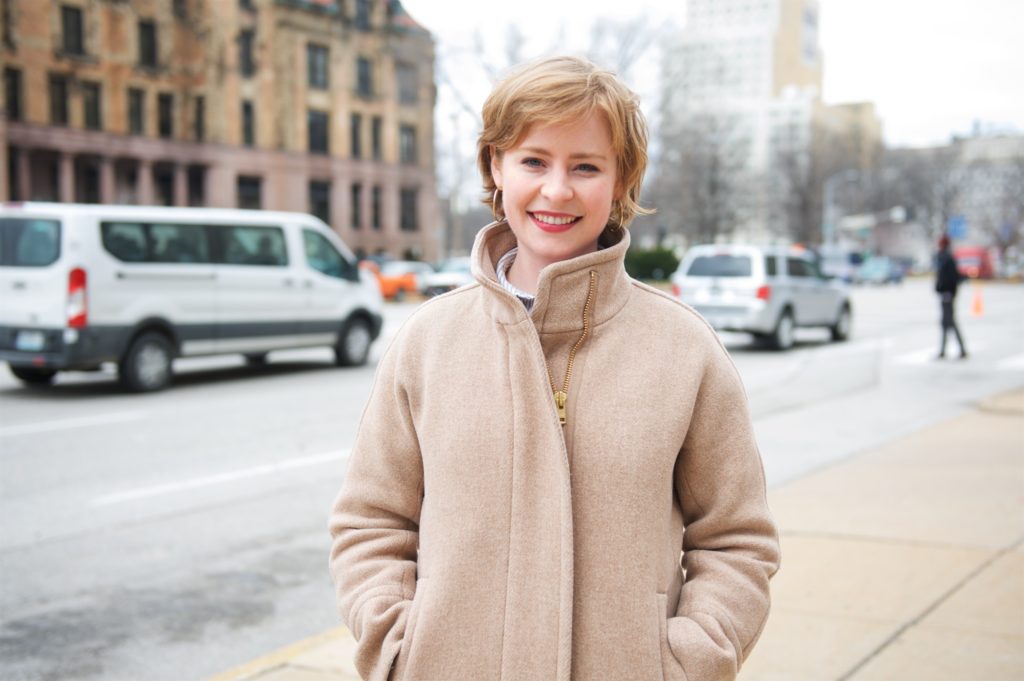
Ellen: I was a senior in college when Mike Brown was shot and that’s actually the reason I came to St. Louis, because I was looking at social work programs around the country. So when I came here, we were a year post Ferguson. If you want to do Racial Equity work, you come to St. Louis, and you show up, and engage. This is something that I don’t think I’ve asked myself before, so this will be kind of a rough answer, but I’m sure you’ve seen those maps of St. Louis that show income and race overlaid, and you see that all the African American communities have lower incomes and credit scores and it’s so distinctive by your place and your race. So for me, in 2039, it doesn’t look like that anymore. It’s not determined by where you grew up or your race doesn’t determine your ability to thrive in this city as it does now. When I think about sending my kids to school one day in 2039, it looks like they have friends that are every color and are from every different background. Their friends don’t look like my friends when I was going up. I pretty much just had White friends, and that’s not okay. So I want that for my kids and for the kids in St. Louis.
Tishaura: We just have to become radical about our approach as to what St. Louis is going to look like in 2039. They think it’s far away, but it’s not. You have to be able to invest in the work now in order to see the change that you want to see in that year, and we have to be bold and unapologetic about it.
Ellen: I agree, and I would also like to add that we know how to solve a lot of these problems. We know how to move the needle on poverty, on food deserts, and things like that. This is not rocket science. There are programs across the country and across the world that move the needle.
Tishaura: Universal basic income.

Ellen O’Neill and Tishaura Jones. (Photo story by Lindy Drew/Humans of St. Louis)
Ellen: Exactly. So none of these issues are insurmountable. We just need to get serious about it. We need to even out the playing field. We need to be bold about it and put resources towards it because these are things that we can do. None of this is out of our reach. We have to keep reminding ourselves that we can completely solve this.
Tishaura: Right. If we can come together in several months and put together a $16,000,000 plan to try to keep a football team that didn’t want to stay here, imagine if we put that kind of energy and resources towards fixing poverty. People in St. Louis are just terrified of change. 885 votes worth of terrified.
Tishaura O. Jones
Treasurer, City of St. Louis
Ellen O’Neill
College Savings Account Coordinator

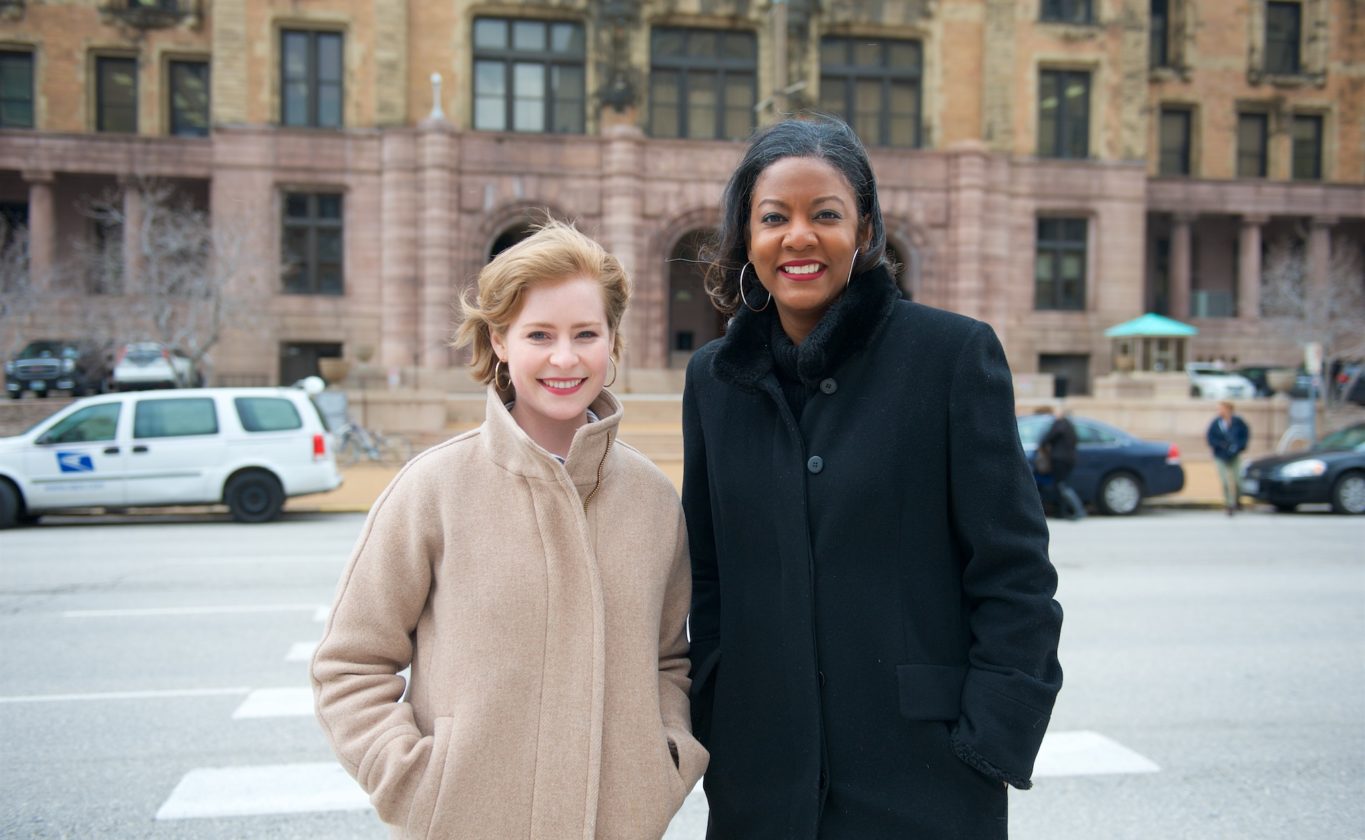
#FwdThruFerguson